Africa is the second-largest continent in the world by both land area and population, following Asia. Including its adjacent islands, Africa covers about 6% of Earth’s total surface area and 20% of the total land area. It is bordered to the north by the Mediterranean Sea, to the northeast by the Suez Canal and the Red Sea, to the southeast by the Indian Ocean, and to the west by the Atlantic Ocean. Scientists often refer to Africa as the “Cradle of Humankind” due to the discovery of numerous early human fossils on the continent, some dating back as far as 3.5 million years. The name “Africa” is believed to derive from the word “Afri” or “Afer,” which was the name of a group of people who lived near the Roman settlement of Carthage in North Africa, combined with the Roman suffix “-ca,” meaning “land” or “country.” Some suggest that the name could also originate from the Latin word “aprica,” meaning “sunny,” or the Greek word “a-phrikē,” meaning “without cold.” Regardless of its etymology, Africa is home to some of the world’s most remarkable natural wonders, including Mount Kilimanjaro, the Great Rift Valley, Lake Victoria, the Sahara Desert, and the Nile River.
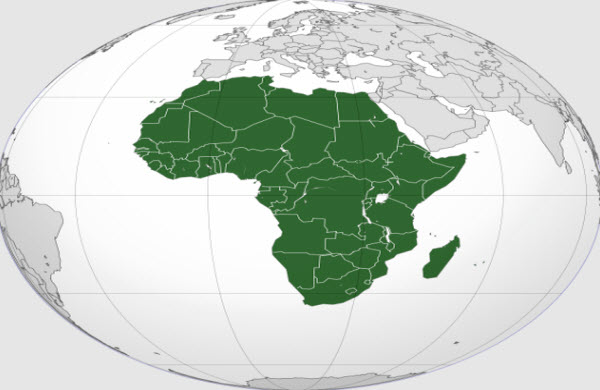
Despite its abundance of natural resources, Africa remains the poorest and most underdeveloped continent. This situation is largely due to a combination of factors, including the legacy of the slave trade, colonialism, geopolitical tensions, corrupt governments, widespread human rights abuses, and ongoing conflicts ranging from wars and civil wars to guerrilla warfare and genocides.
Geographical Overview of Africa
Africa is geographically diverse and ancient, with most of the continent remaining unchanged for over 550 million years. It is separated from Europe by the Mediterranean Sea and from Asia at its northeastern extremity by the Isthmus of Suez. Geopolitically, the Egyptian Sinai Peninsula east of the Suez Canal is often considered part of Africa. Africa stretches from “Ras ben Sakka” in Tunisia in the north to “Cape Agulhas” in South Africa in the south, covering a distance of about 8,000 km. Its westernmost point is “Cape Verde,” while its easternmost is “Ras Hafun” in Somalia, spanning approximately 7,400 km between them. The continent’s coastline measures about 26,000 km.
The continent spans the equator and contains a wide range of climatic zones, making it the only continent to stretch from the northern temperate zone to the southern temperate zone. Its climate ranges from tropical to polar on its highest peaks. The northern half of Africa is primarily desert or arid, while the central and southern regions contain savannas and dense rainforests. Africa’s vegetation is dominated by the Sahel and steppe landscapes.
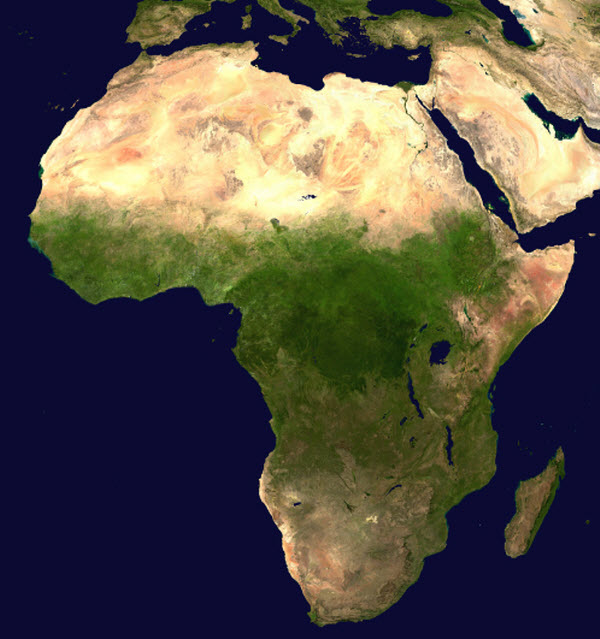
Africa is also renowned for its rich biodiversity, hosting large carnivores such as lions, hyenas, and leopards, alongside herbivores like buffaloes, gazelles, elephants, camels, and giraffes. These animals roam freely in largely open plains. The continent is also home to a variety of forest creatures, including snakes and primates, as well as aquatic life like crocodiles and amphibians.
One of the most fascinating geographical features of Africa is the Nile River, the world’s longest river, stretching 6,650 km and shared by 11 countries. The Nile has two major tributaries: the White Nile, which originates in Central Africa’s Great Lakes region and flows north from Tanzania to South Sudan, and the Blue Nile, which provides most of the river’s water. These rivers meet near Khartoum, Sudan, and flow northward through the desert to Egypt, eventually emptying into the Mediterranean Sea. Another significant natural feature is the Sahara Desert, the world’s hottest desert and the third largest after Antarctica and the Arctic. The Sahara, roughly the size of China, covers about one-third of the continent, spanning 9 million square kilometers and featuring rocky plains, rolling sand dunes, and several sand seas.
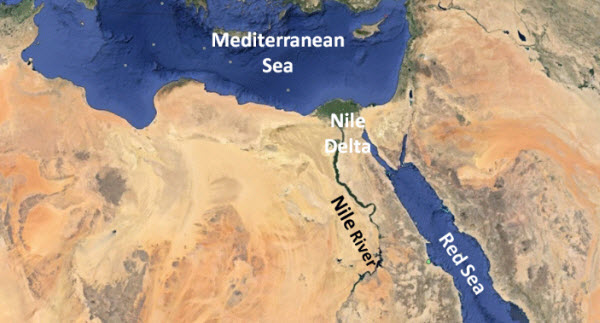
The History of Africa
Most paleoanthropologists consider Africa to be the oldest inhabited region on Earth. During the mid-20th century, numerous fossils and evidence of early human existence were discovered, dating back millions of years. In ancient times, Africa, like other continents, did not have nation-states but was instead inhabited by groups of hunter-gatherers. By the end of the last Ice Age, around 10,500 BCE, the Sahara was a lush, green valley that drew populations from the interior highlands and coastal regions of Africa. However, by 5,000 BCE, climate warming and drying turned the area into a desert once more, pushing the inhabitants toward the Nile Valley below the Second Cataract, where they established permanent or semi-permanent settlements.
Historians believe that cattle were domesticated in Africa before agriculture, around 6,000 BCE, and coexisted with hunting and gathering cultures in North Africa’s Sahara and Nile regions. These societies domesticated several animals, including zebras and small goats. The earliest instances of plant domestication for agricultural purposes occurred in the Sahel around 5,000 BCE, with the cultivation of sorghum and African rice. By 4,000 BCE, the Sahara became increasingly arid, a climatic change that reduced the size of lakes and rivers, shrinking the area suitable for settlements and prompting agricultural communities to migrate to the more tropical climates of West Africa.
By 3,000 BCE, agriculture had independently emerged across the tropical regions of West Africa, with the domestication of yams, oil palms, and the cultivation of crops like cowpeas, peanuts, cotton, and watermelons. By the first millennium BCE, ironworking was introduced in North Africa and spread rapidly across the Sahara to the northern parts of sub-Saharan Africa. By 500 BCE, copper mining began in Egypt, North Africa, Nubia, and Ethiopia.
Early Civilizations and Trade
From 3,300 BCE, the historical period in Africa began with the emergence of writing in ancient Egypt under Pharaonic rule, which continued with varying levels of influence over other regions until 343 BCE. Notable civilizations during this time included Carthage, Axum, Nubian kingdoms, the Sahelian Empires (Kanem-Bornu, Ghana, Mali, and Songhai), Great Zimbabwe, and the Kingdom of Kongo. Despite the Sahara becoming a desert, it was not an insurmountable barrier for travelers moving between the north and south, who used oxen before the introduction of camels for transportation. Trade routes followed the oases scattered across the Sahara. Camels were first introduced to Egypt by the Persians after 525 BCE, but large herds did not become widespread enough to establish camel-based trade across the Sahara until the eighth century CE, when the Berbers became the first to exploit this.
Pre-colonial Africa consisted of nearly 10,000 different states and diverse forms of government, ranging from small family groups of hunter-gatherers like the San people of southern Africa to larger, more organized communities like the Bantu-speaking populations of central and southern Africa, highly organized clan groups in the Horn of Africa, and the city-states of East Africa. In 1482, the Portuguese established the first of many trading posts along the coast of what is now Ghana, dealing primarily in slaves, gold, ivory, and spices. The European discovery of the Americas in 1492 significantly increased the demand for African slaves.
In West Africa, the decline of the Atlantic slave trade in the 1820s caused dramatic economic shifts in local political systems due to increased anti-slavery legislation in Europe and the Americas and the growing presence of the British navy off the coast of West Africa. This forced African states dependent on the slave trade to adopt new activities. Major powers in West Africa, such as the Asante Confederacy, the Kingdom of Dahomey, and the Oyo Empire, adopted various paths to adapt to this shift by developing their export trade in palm oil, cocoa, timber, and gold. The Asante and Dahomey successfully adapted, while Oyo could not adjust and collapsed into civil wars.
By the mid-19th century, European explorers became increasingly interested in exploring the heart of Africa and opening the region to trade, mining, and commercial exploitation, in addition to converting the populations to Christianity. At this time, the central part of Africa was still largely unknown to Europeans. The primary goal of these explorers was to identify the source of the Nile River. The expeditions of Burton and Speke (1857-1858) and Speke and James Grant (1863) reached Lake Tanganyika and Lake Victoria, eventually proving to be the primary source of the Nile. By the end of the century, Africa was well-explored, paving the way for subsequent European colonization.
Colonialism and the Scramble for Africa
In the late 19th century, European imperial powers engaged in a significant scramble for African lands, leaving only two independent states: Liberia, a state partly settled by African Americans, and Ethiopia. Colonial rule by Europeans continued until after World War II, when nearly all colonial states gradually gained formal independence.
Colonialism had a destabilizing effect on many ethnic groups, which persists today. European insistence on drawing boundaries around territories to isolate them from those of other colonial powers led to the separation of adjacent political groups or forced traditional enemies to live side by side without any barriers. For example, although the Congo River seems a natural geographic boundary, there were groups sharing language or culture on both sides. When the land was divided between Belgium and France along the river, these groups were isolated from each other. Often, those who had traded across the continent for centuries found themselves crossing borders that existed only on European maps.
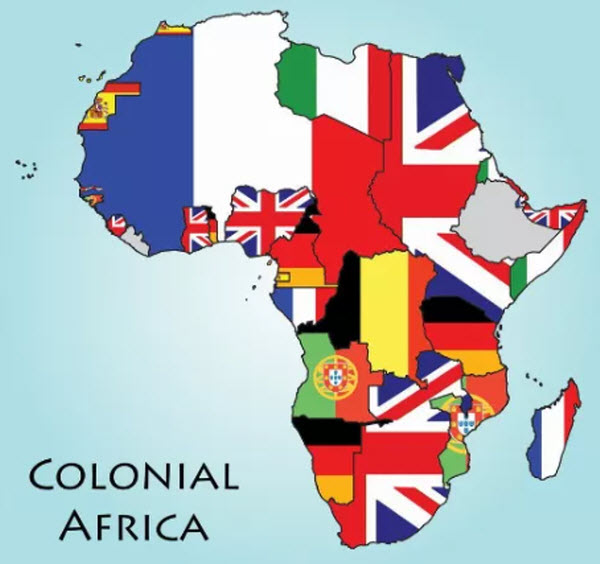
In countries with large European populations, such as Rhodesia (now Zimbabwe) and South Africa, settlers were able to appropriate most of the land and control its production, relegating local populations to poorly maintained reserves. In other areas, settlers were encouraged to settle where their numbers were small enough that land alienation remained small. This was the case in Kenya, where even today, descendants of Europeans remain active in the country’s agricultural production and politics. After the departure of European authorities, the colonial boundaries remained in place. In 1963, the Organization of African Unity (now the African Union) agreed to respect the borders that were in place upon independence. The aim was to prevent new nations from fighting one another over border disputes that could endanger new states’ independence and stability. In practice, however, many of the continent’s borders are hotly contested.
Independence Movements and Post-Colonial Africa
Starting in 1951, with Libya’s independence from Italy, a wave of decolonization swept across Africa, rapidly leading to the establishment of numerous sovereign states. This shift was characterized by an emergence of nationalist movements that sought to dismantle colonial rule. By the late 20th century, most African countries had achieved independence from their European colonizers.
Despite independence, many African nations grappled with the lingering effects of colonialism, including arbitrary borders that often ignored ethnic, cultural, and linguistic boundaries, which led to internal conflicts and challenges in state-building. Moreover, the newly independent states frequently faced economic difficulties, as their economies were primarily oriented towards serving the interests of the colonial powers, lacking diversification and infrastructure.
Modern Africa: Challenges and Progress
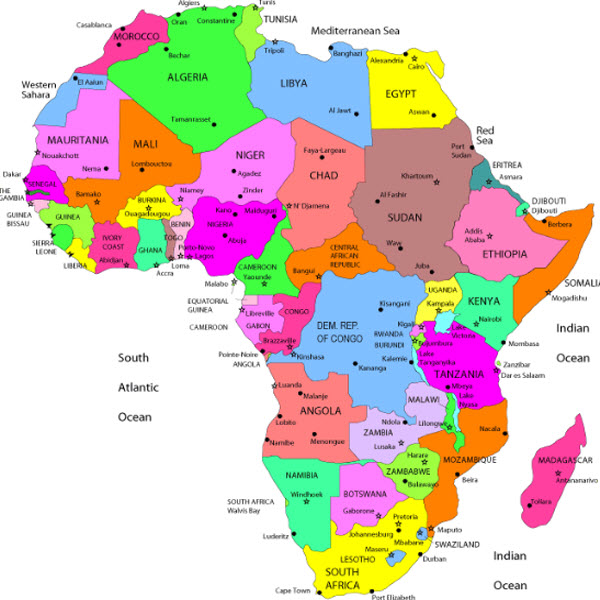
Today, Africa is a continent of contrasts. It faces significant challenges, including poverty, corruption, disease, and internal conflicts, yet it also boasts some of the fastest-growing economies in the world. In recent years, Africa has seen improvements in infrastructure development, education, healthcare, and governance. Countries like Nigeria, South Africa, Kenya, and Egypt have become economic hubs, while others like Rwanda and Botswana are hailed for their strides in governance and reducing corruption.
Africa’s population is also rapidly growing, with a significant proportion being under the age of 25. This youthful demographic presents both opportunities and challenges, offering a potential workforce for economic development while also requiring significant investment in education and job creation to prevent unrest.
In recent years, Africa has been undergoing a technological revolution, with mobile technology and internet access rapidly expanding across the continent. This digital transformation has fostered innovation, entrepreneurship, and new opportunities for economic growth and development.
The African Union (AU), established in 2001, has played a crucial role in promoting peace, security, and development across the continent. The AU’s Agenda 2063 aims to transform Africa into a global powerhouse of the future, focusing on sustainable development, economic growth, and integration among African nations.
Demographics

African Peoples
The population of the African continent is approximately 1.21 billion, which is about 12.76% of the world’s population of 7.1 billion. It is by far the second most populous continent on the planet. Nigeria is the most populous country (206.4 million people), followed by Ethiopia (115 million people), Egypt (102.3 million people), and then the Democratic Republic of the Congo (89.6 million people). The least populous countries are Saint Helena (6,000 people), Seychelles (98,300 people), São Tomé and Príncipe (219,200 people), and Mayotte (272,800 people).
Africans practice a wide range of religious beliefs, and it is difficult to obtain accurate statistics on religious demographics across the entire continent. However, according to some estimates, approximately 46.5% of all Africans are Christians, 40.5% are Muslims, with around 11.8% following indigenous African religions, and a small number of Africans are Hindus, Baha’is, or have other beliefs. Indigenous religions in sub-Saharan Africa tend to revolve around spirituality and ancestor worship. Common in traditional belief systems is the division of the spiritual world into beneficial and harmful spirits, with beneficial spirits typically including ancestral spirits that assist their descendants and powerful spirits that protect entire communities from natural disasters or enemy attacks, while harmful spirits include the spirits of victims who were buried without proper funerary rites and spirits used by mediums to cause illness among enemies.
The ancient Kingdom of Egypt in the third millennium BCE is considered the first known complex religious system on the continent. In modern times, many sub-Saharan Africans were converted to Christianity during the colonial period, and Islam entered Africa when Muslim Arabs conquered North Africa during the years 640 and 710 CE, starting with Egypt. Muslims were also among the Asian peoples who later settled in British-ruled Africa during the colonial era, where Christianity succeeded in converting those following traditional religions but did not fare as well in converting Muslims, who benefited from urbanization and increased trade to settle in new areas and spread their faith. Islam has continued its massive growth in the 20th and 21st centuries, with some estimates suggesting its spread is twice as fast as Christianity in Africa.
In addition to religions, Africa is home to over a thousand languages (some estimate over two thousand), most of which are of African origin, and some of European origin. The continent is the most linguistically diverse in the world, so it is not uncommon to find individuals who speak not only several African languages but also one or two European languages fluently. It has four major language families: the Afro-Asiatic family, consisting of about 240 languages spoken by 285 million people across East and North Africa, the Sahelian family, comprising over a hundred languages spoken by 30 million people mainly in Chad, Ethiopia, Kenya, Sudan, Uganda, and northern Tanzania, the Niger-Congo family, likely the largest language family in the world by number of languages, including many Bantu languages spoken in much of sub-Saharan Africa, and finally the Khoisan family, made up of about 50 languages spoken by approximately 120,000 people in South Africa, many of which are endangered.
After the colonial period, nearly all African countries adopted official languages that originated outside the continent, although many countries now also use various African-origin languages (such as Swahili) as official languages. However, in many countries, English and French are used for public communication in areas such as government, trade, education, and media, in addition to Arabic and Portuguese as other examples of non-African languages, which millions of Africans use today in both public and private spheres.
